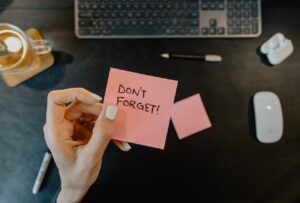
The Neurobiology of Mindfulness: 5 Key Areas
A basic understanding of what’s happening on a neurobiological level when we practice mindfulness can be helpful. Here’s five areas in the brain that are

I felt constantly stressed. I was beginning in my career and always had this feeling that I had to ‘make it’ – to climb the career ladder and make money. With this though came a growing sense of ‘unease’.
Chris Cheung, www.atoolkitforlife.com Tweet
I was recently interviewed about my experience of mindfulness practice so I thought I’d share my responses here; to introduce my mindfulness journey, and to show that you are not alone in the challenges that you may be facing.
I started to practice mindfulness in 2002.
I felt constantly stressed. I was beginning in my career and always had this feeling that I had to ‘make it’ – to climb the career ladder and make money. With this though came a growing sense of ‘unease’. It didn’t bring me the clarity that I was hoping for, nor the depth of relationships that I was longing for; particularly the relationship with myself.
It was a long time ago, so I’m not exactly sure of the first time. I think it was probably when I was back at home, in my room in London. I would meditate in front of the radiator, one because it was white, and, two because it was warm. This makes me think that it was probably a cold, grey day in London (Autumn or Winter), when I was feeling particularly down, that I started. At the beginning, I was reading a book called ‘The Three Pillars of Zen’ by Philip Kapleau, and I remember following the practices outlined in the book. I felt immediately drawn to the practice and life-style that he outlines in the book. When I practiced the sitting mediation that he described, I felt an immediate sense of ‘coming home’, a relaxation and a groundedness that I really enjoyed. My first sit was probably only a couple of minutes but I enjoyed the practice so much that I have persisted over the last 20 years.
My ‘formal’ practice is to sit for 30 minutes every day in the morning. Full-lotus position. The position I have found has been quite important in helping me to develop my practice – providing me with that sense of solidness and stability that helps me to maintain attention for longer periods. The practices I normally use are the ‘three step breathing space’, watching the breath, and body scan.
I have since realised that more of the things that I do during the day can also be turned into practice…if I remember. For example, walking from one place to another can be turned into walking mindfully, eating can be turned into eating mindfully, getting up from a chair can be getting up mindfully. To do any of these things during your day, with intention, is also mindful practice. The challenge is remembering to do it with intention.
I have since realised that more of the things that I do during the day can also be turned into practice…if I remember.
Chris Cheung, www.atoolkitforlife.com Tweet
Less stress, more grounded, better relationships, less fear, more confidence. Better health. A greater tendency to smile and laugh.
There’s been quite a few challenges.
Irregular practice – just finding the time to practice. This gets better, paradoxically, the more you practice. The more you practice, the more the benefits of the practice draw you into the practice and it becomes more regular.
Reaching a plateau – thinking that ‘I’ve made it’ early on in the practice, and, not realising the depth to which the practice could go. Just knowing that mindfulness was a capacity that could be developed was a breakthrough for me.
Understanding what it is actually – some of the concepts and literature around mindfulness practice can be quite abstract, it took me a while to get a more specific sense of what the practice is (see recommended books below for some guidance).
Finding the right teachers – there are quite a few teachers out there. Finding the ones aligned with your journey can take a while.
Why did you start ATOOLKITFORLIFE?
I spent a long time looking for ‘answers’ outside of myself before I came upon mindfulness practice. It made me realise I’d be looking in the wrong places for quite a long time. There’s no reason why people should be looking in the wrong place for so long. So, I thought ATKFL could be a platform that could help people ‘find their way’ a bit more quickly. I get the feeling that there are a lot of people that are looking for answers in the same way that I was. I hope the practical, evidenced-based tools on ATKFL will be able to help them.
Just start with a couple of minutes at the beginning. Regularity is more important than length of time.
Recommended Reading

A basic understanding of what’s happening on a neurobiological level when we practice mindfulness can be helpful. Here’s five areas in the brain that are

The three step breathing space takes the practitioner on a journey of mindfulness practice. It begins by watching the sensations in the body, then thoughts

Jon Kabat-Zinn’s definition points to mindfulness being attention on purpose in the present moment and non-judgmentally. Read this article for an even simpler definition.